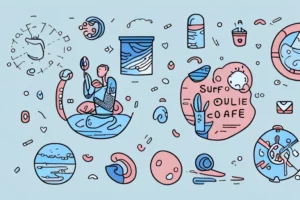DIY crafts and activities for kids of all ages can bring hours of fun, creativity and learning.
With a few simple supplies, parents, teachers and caregivers can help children learn, create and explore while also keeping them entertained.
Here are some great ideas and tips to get you started.
Gather the Supplies
To make your DIY craft and activity time a success, it is important to gather the needed supplies before you get started.
Depending on the craft or activity you choose, you may need paint, paper, markers, glue, construction paper, scissors and/or other art supplies.
You may also need non-art supplies such as string, magnets, paper clips, or coins. Gathering these ahead of time will help you maximize your crafting time.
It is also important to make sure you have enough supplies for the project. If you are working with a group, make sure to have enough supplies for everyone.
Also, it is helpful to have a few extra supplies on hand in case of any accidents or mistakes.
Having the right supplies will help ensure that your craft or activity is a success.
Ideas for Crafts
There are countless ideas for crafts to choose from.
Here are some popular ideas: paper mache sculptures, collages, fingerprint art, rock painting and clay sculpting. These are all great crafting activities that are fun and easy to do.
Encourage your child to come up with their own idea as well! It may provide you with a wholly unique craft that you can do together.
If you’re looking for something a bit more challenging, consider trying out a woodworking project.
You can make a birdhouse, a wooden box, or even a small piece of furniture.
Woodworking is a great way to teach your child about the basics of carpentry and engineering.
It’s also a fun and rewarding activity that you can do together.
Ideas for Activities
When it comes to activities for kids of all ages, the possibilities are endless.
If you are looking for something low-tech and low-cost, consider doing scavenger hunts, relay games, jigsaw puzzles, or creating mazes with string.
Do you want to be more adventurous? You could try outdoor activities such as planting a garden or bird watching.
You can also play old-fashioned card or board games.
In case you are looking for something more creative, you could try making homemade playdough, painting rocks, or creating a puppet show.
You could also try making a fort out of blankets and pillows or setting up an obstacle course in your backyard.
When you want something educational, you could try doing science experiments, playing educational games, or reading books together.
No matter what activity you choose, the most important thing is to have fun and make memories.
With a little bit of creativity, you can come up with activities that will keep your kids entertained for hours. So get creative and have fun!
Age-Appropriate Projects
When planning activities and crafts for children of multiple ages, it is important to pick age-appropriate projects.
Young children may have difficulty understanding complex directions or have difficulty using small pieces.
Keep in mind that younger children might need help with their projects or may become frustrated easily.
Pick projects that require minimal help or that have larger pieces that are easier to manage.
When selecting age-appropriate projects, consider the age range of the children.
For example, a project that is suitable for a five-year-old may be too difficult for a three-year-old.
It is important to select projects that are appropriate for the youngest child in the group. Additionally, consider the amount of time needed to complete the project.
Some projects may require more time than others, so it is important to select projects that can be completed within the allotted time.
When selecting age-appropriate projects, it is also important to consider the materials needed.
As there may be projects that require more materials than others, it is important to select projects that can be completed with the materials available.
Additionally, consider the level of mess that the project may create. Some projects may require more clean-up than others, so it is important to select projects that can be completed with minimal mess.
Safety Tips
Safety is always important with children. If you are using art supplies be sure they are labeled “non-toxic” or “child-safe.”
Also, make sure that scissors are used properly with guidance and supervision by an adult. Children should never use an open flame, permanent markers or glue that is not labeled safe.
Be mindful of any choking hazards and be sure to keep small pieces away from infants or toddlers.
It is also important to keep an eye on the environment in which the art supplies are being used.
Make sure that the area is well-ventilated and that any chemicals or paints are used in a well-ventilated area.
Additionally, be sure to keep any art supplies away from pets or other animals, as some of the materials may be toxic to them.
Educational Benefits
Crafts and activities are a great way to reinforce new skills with children.
For example, playing card games can teach children numbers and basic math skills. Decorating rocks with paint can help pre-schoolers learn the names of colors and sorting objects by shape or size can teach basic sorting skills.
Additionally, creativity and imagination can be fostered through making art or pretending with simple costumes.
Crafts and activities can also help children learn problem-solving skills.
For example, building a tower out of blocks can help children learn how to balance and stack objects.
Puzzles can help children learn how to identify patterns and shapes. Also, playing board games can help children learn how to take turns and follow rules.
These can also help children learn about the world around them.
For example, planting a garden can help children learn about the life cycle of plants. Making a bird feeder can help children learn about the different types of birds in their area. Additionally, making a map of their neighborhood can help children learn about geography and the layout of their community.
Setting Up a Workspace
To make the most out of your crafting time, it is important to set up an area where all the tools and supplies needed are within reach.
Gather the supplies you will need and set them up in an easily accessible filled with natural light. Choose a space that is comfortable for everyone and free of distractions.
Organize your supplies in a way that makes sense to you. This could mean grouping items by type, color, or size.
Make sure to label each container so you can easily find what you need. If you have a lot of supplies, consider investing in storage solutions such as shelves, drawers, or bins.
Finally, make sure to keep your workspace clean and tidy. This will help you stay focused and productive.
Take a few minutes each day to put away any supplies you used and wipe down your workspace. This will help you stay organized and motivated to craft.
Clean Up Tips
Crafts can inevitably get a bit messy.
Set up a separate space for cleaning up when you are done crafting. This could be an outdoor patio or a designated area in the kitchen.
Have cleaning supplies ready so that it is easier to clean up when the crafting time is finished.
Ask everyone to help clean up and make sure all materials are stored away safely so they can be reused.
Great Ways to Store Craft Supplies
The best way to store craft supplies depends on what type of supplies you have.
Hard items such as cardboard, paper mache boxes, beads and foam pieces should be stored in bins or containers that keep items separated and organized.
Delicate materials such as glitter, sequins, stamps or strings should be stored in shallow storage containers that are clearly labeled.
You can have one bin for each type of craft supplies, which makes it easy for children to find what they need.
Cost-Effective Ideas
DIY crafts and activities do not need to be expensive.
Many of the materials needed for these projects can already be found in your home: paint from old t-shirts, scrap paper from your printer, or even empty food containers can make great objects for a crafty project.
In addition to everyday materials around your home, there are also websites such as Pinterest that provide creative ideas on how to repurpose household items into meaningful projects.




